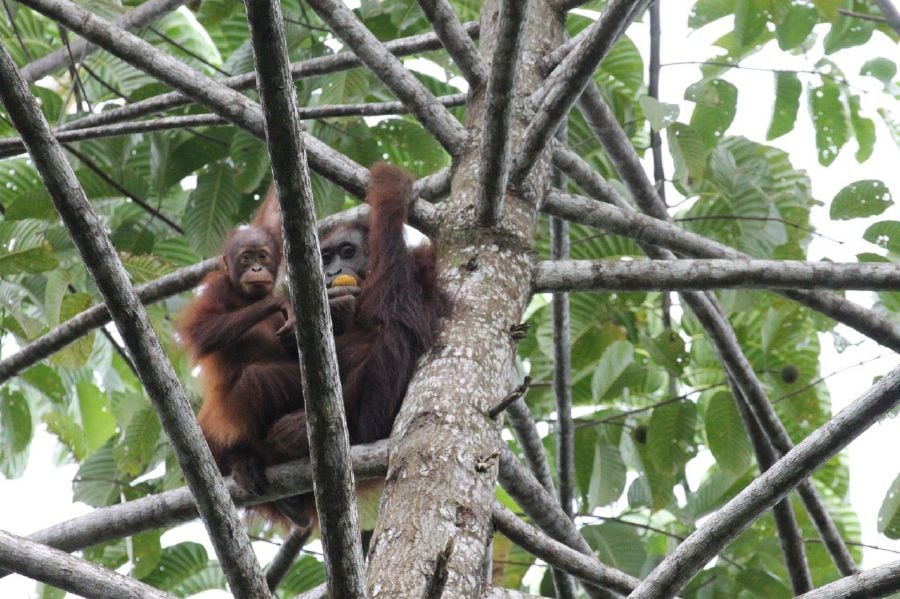LAHAD DATU: Years of collaborative reforestation efforts in Bukit Piton have borne fruitful results, as hundreds of orangutans are now calling the area home.
According to a study by Alfred et. al. in 2010, Bukit Piton, previously known as North Ulu Segama, has approximately 300 orangutans.
However, WWF-Malaysia head of conservation Sabah, Dr Robecca Jumin, said between the 1980s and 2007, the forest saw tremendous decline due to unsustainable logging practices and drought-induced forest fires.
"The result was its vulnerability for conversion to agricultural lands, not unlike the areas that surround it.
"But Bukit Piton had one last golden card to play. Its retention as a protected forest reserve was recognised as being critical to ensure the continuous survival of the orangutan population," she said in a statement.
She added that during that time, the chances of the orangutan population's survival was close to zero, as they were already isolated by surrounding palm oil plantations that prevented them from foraging out of the isolated area for food and breeding purposes.
Recognising the importance of retaining the forest, WWF-Malaysia began collaborative reforestation efforts with the Sabah Forestry Department in 2007, when open and exposed areas were planted with fast growing pioneer species such as Binuang (Octomeles sumatrana) and Laran (Neolamarckia cadamba).
Besides Dipterocarps, which were planted in shaded areas, fruit trees such as Sengkuang (Dracontomelon dao), Terap (Arthocarpus sp) and Fig (Ficus sp) were also planted to support the orangutans' feeding habits.
In Nov 2019, the completion of restoration efforts at Bukit Piton saw 2,400ha of the degraded forests successfully restored with the planting of over 300,000 trees.
"In 2011, after years of careful observation on the field, the WWF-Malaysia's Orangutan Conservation Team found that the orangutans had indeed begun utilising the replanted trees in Bukit Piton.
"Nests were found on the Laran and Bayur trees that lined the forest. Individual orangutans were seen eating on trees that had begun to fruit.
"Orangutan babies were also found in the area, a sure sign that the orangutans were eventually recognising Bukit Piton as the home that they once lost and was now revived," she said.
Apart from the restoration efforts, Robecca also attributed the success to the state government reclassifying the forest areas from Class II – Commercial Forest Reserve to Class I – Protection Forest Reserve in 2012.
She said such a move meant that the forest is now protected by law from any form of land conversion, timber exploitation or extraction of forest products.
"The success of Bukit Piton in restoring orangutan habitat was a result of a vision quite similar to the 100 Million Tree-Planting Campaign 2020-2025 that was launched recently.
"Its vibrant existence today is a reminder that forest restoration is not an impossible task if relevant authorities and entities come together to make it happen."
A few days ago, Prime Minister Tan Sri Muhyiddin Yassin planted a Merbau tree on the grounds of his official residence, Seri Perdana, for the 100 Million Tree-Planting campaign.
Sabah Chief Minister Datuk Seri Hajiji Noor also announced that the state will plant 36 million trees.


Comments
Post a Comment